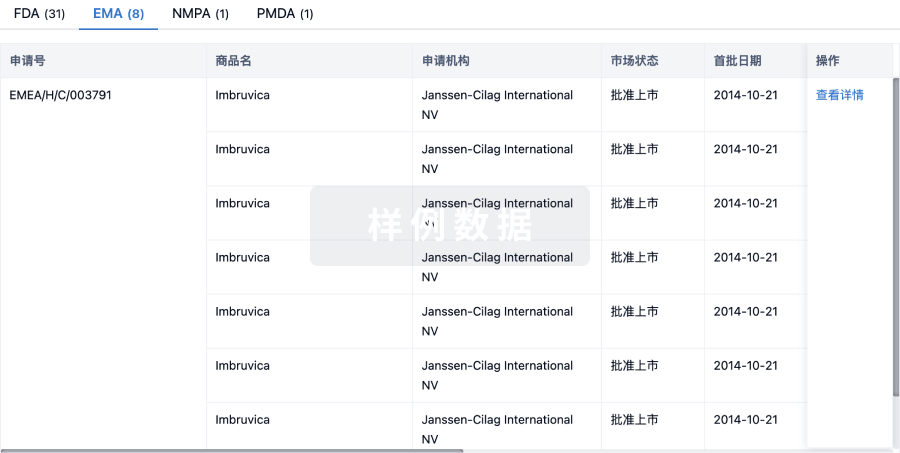预约演示
更新于:2025-11-01
Icomucret
更新于:2025-11-01
概要
基本信息
结构/序列
分子式C20H32O3 |
InChIKeyJSFATNQSLKRBCI-VAEKSGALSA-N |
CAS号54845-95-3 |
关联
100 项与 Icomucret 相关的临床结果
登录后查看更多信息
100 项与 Icomucret 相关的转化医学
登录后查看更多信息
100 项与 Icomucret 相关的专利(医药)
登录后查看更多信息
1,836
项与 Icomucret 相关的文献(医药)2025-11-01·PHYTOMEDICINE
Mulberry (Morus alba l.) leaf improves arachidonic acid metabolism disorder in chronic obstructive pulmonary disease
Article
作者: Liu, Qi-Ming ; Chen, Bi ; Huang, Xian-Jie ; Tang, Dao-Quan ; Cui, Xu-Teng ; Zhao, Yan-Lin ; Wei, Juan ; Du, Yan ; Huang, Zhong
BACKGROUND:
Chronic obstructive pulmonary disease (COPD) cannot be fully assessed in severity using current diagnostic methods and spirometry. Previous studies indicate that arachidonic acid (ARA) metabolic dysregulation is closely linked to inflammation and oxidative stress, yet its association with COPD remains unclear.
PURPOSE:
This study aims to investigate the relationship between ARA metabolism and COPD, as well as the intervention mechanism of mulberry (Morus alba l.) leaves, using functional metabolomics.
METHODS:
We employed ultra-performance liquid chromatography-tandem mass spectrometry to measure serum ARA and its 11 metabolite concentrations in clinical samples (91 healthy subjects and 191 COPD patients) and in COPD rats. Metabolomic techniques were utilized to screen differential metabolites. Additionally, malondialdehyde (MDA), superoxide dismutase (SOD), catalase (CAT), and glutathione peroxidase (GSH-Px) levels in serum from both COPD patients and rats were quantified using assay kits. Hematoxylin-eosin staining and ELISA were applied to observe pulmonary morphology and serum levels of interleukin (IL)-10, IL-6, IL-1β, and tumor necrosis factor (TNF)-α in rats, respectively. Real-time polymerase chain reaction was used to measure mRNA expression of cyclooxygenase (COX), lipoxygenase (LOX), and soluble epoxide hydrolase in rat lung.
RESULTS:
Five differential metabolites, (±)12-hydroxyeicosa-tetraenoic acid (HETE), 15(S)-HETE, (±)11-HETE, prostaglandin E2 (PGE2), and thromboxane B2 (TXB2), were identified in COPD patients and rats. Among these, (±)12-HETE, 15(S)-HETE, and (±)11-HETE showed significant positive correlations with COPD assessment test scores and negative correlations with eosinophil percentages, with high diagnostic sensitivities and specificities. When combined with aminophylline (APL), mulberry leaf water extract (MLWE) intervention significantly improved pulmonary function parameters in COPD rats, outperforming APL or high-dose MLWE alone. MLWE also reduced interstitial inflammatory cell infiltration, lowered mean linear intercept, downregulated COX-2 and 5/12/15-LOX mRNA expression in lung tissue, decreased serum levels of IL-6, IL-1β, and TNF-α, and elevated IL-10. Furthermore, MLWE enhanced SOD, CAT, and GSH-Px activities while reducing MDA levels, indicating mitigation of oxidative stress.
CONCLUSIONS:
ARA metabolic dysregulation contributes to COPD pathogenesis, and (±)12-HETE, 15(S)-HETE, and (±)11-HETE may serve as potential biomarkers for COPD. MLWE exert therapeutic effects by modulating ARA metabolism, ameliorating oxidative stress, and suppressing inflammatory responses, offering a novel strategy for COPD prevention and treatment.
2025-10-01·PROSTAGLANDINS LEUKOTRIENES AND ESSENTIAL FATTY ACIDS
Early-life feeding of arachidonic acid and docosahexaenoic acid beneficially modulated ileum and splenocyte oxylipins to support oral tolerance development in allergy-prone BALB/c mice
Article
作者: Patel, Dhruvesh ; Mazurak, Vera ; Richard, Caroline ; Wang, Ren ; Field, Catherine ; Serna, Magaly Rivas ; Goruk, Susan
BACKGROUND:
Early-life feeding of arachidonic acid (ARA)+docosahexaenoic acid (DHA) has been shown to promote immune changes associated with oral tolerance (OT). Oxylipins have been demonstrated to be modulated by diet and alter immune function.
OBJECTIVE:
To determine whether early-life feeding of ARA+DHA modulated the ileum and ovalbumin (OVA)-challenged splenocyte oxylipin profile in a way that is beneficial for OT development.
METHOD:
Allergy-prone BALB/c dams were fed a control (0 %ARA, 0 %DHA) or ARA+DHA (1 %ARA, 1 %DHA) diet during suckling. At 3wks, half of the pups were killed to analyze ileum morphology and oxylipin profile. The remaining pups continued consuming the maternal diets. From day 21-25, pups received daily oral gavage of sucrose or OVA, followed by intraperitoneal OVA injections on day 35 and 41. At 6wks, pups were killed to analyze plasma OVA-specific-IgE and -IgG, ileum morphology, splenocyte phospholipid fatty acid composition and ex vivo splenocyte oxylipin production after OVA stimulation.
RESULTS:
ARA+DHA supplementation resulted in a 5-fold reduction in plasma OVA-IgE concentration, confirming OT development. At 3wks, ARA+DHA-fed mice had higher ileum levels of 8-HETE, 14,15-DiHETrE, 4-HDHA, 17-HDHA and 19,20-EpDPE and lower levels of 13-HODE and 20-HETE, which suggests better ileum maturation, lower inflammation and enhanced tolerogenic immune regulation to support OT. The longer villi, shorter crypts and higher villus/crypt ratio confirmed the superior ileum maturation. At 6wks, ARA+DHA supplementation increased oxylipin substrates (ARA, DHA, linoleic acid and eicosapentaenoic acid) in splenocyte phospholipids. After OVA stimulation, splenocytes from ARA+DHA-fed mice produced more PGD2, 5-HETE, 15-HETE and 20-HDHA and less TXB2 and 12-HETE, which suggests inhibited Th2 and allergic responses and enhanced tolerogenic immune modulation to support OT.
CONCLUSION:
Early-life feeding of ARA+DHA beneficially modulated the oxylipin profile in the ileum and OVA-challenged splenocytes to support OT development.
2025-10-01·BIOCHIMICA ET BIOPHYSICA ACTA-MOLECULAR CELL RESEARCH
Mitochondrial DNA genotypes modify m.3243A>G-associated mitochondrial disease via the 15-HETE/Akt/FoxO1 pathway
Article
作者: Fang, Hezhi ; Qu, Xiaoning ; Wang, Qian ; Lyu, Jianxin ; Bai, Yuxiao ; Wang, Ya ; Lin, Xianlong ; You, Chang ; Zhang, YiQing ; Jiang, Minghua ; Wang, Zhaoxia
Mitochondrial disease caused by mitochondrial DNA (mtDNA) 3243A>G mutation is characterized by high levels of clinical heterogeneity. Varied m.3243A>G mutation loads among patients are used to, but cannot fully explain, disease heterogeneity. Here, we found that mtDNA genotypes (haplogroups) modify m.3243A>G-associated natural selection and cell fate determination. mtDNA haplogroup M7 was less prevalent in a multi-center m.3243A>G disease cohort. Further functional studies using cybrids showed that M7 accelerated cell proliferation and shortened G0/G1 cell cycle when compared with cybrid carrying a non-M7 haplogroup (D5). However, mitochondrial function and cell viability were even worse in M7 cybrid than D5 cybrid when treated with mitochondrial oxidative phosphorylation (OXPHOS) inhibitors, indicating that M7 drives negative selection in patients with m.3243A>G during evolution. By adopting multi-omics strategies, we showed a lesser increase of 15-hydroxyeicosatetraenoic acid (15-HETE) levels in M7 cybrid owing to OXPHOS inhibition, leading to insufficient Akt/FoxO1 activation and increased apoptosis. Notably, 15-HETE administration activated Akt/FoxO1 phosphorylation and abolished apoptosis difference between M7 and D5 cybrids, suggesting that augmented 15-HETE was vital to protect cells from death. Collectively, our work identified a genetic modifier of m.3243A>G-associated mitochondrial disease and demonstrated that the mitochondrial retrograde 15-HETE/Akt/FOXO1 signaling cascade plays an important role in protecting cells from OXPHOS dysfunction-induced cell death.
1
项与 Icomucret 相关的新闻(医药)2025-06-28
·今日头条
【导读】
了解 KRAS突变驱动的胰腺导管腺癌(PDAC)发展和进展的机制,可能有助于发现靶向 KRAS 突变型 PDAC治疗的新策略。
6月26日,中山大学/深圳大学研究团队在期刊《Advanced Science》上发表了研究论文,题为“KRAS/ABHD17C/ALOX15B Axis Promotes Pancreatic Cancer Progression via Ferroptosis Evasion”,本研究表明ALOX15B的下调与 KRAS 突变型胰腺导管腺癌(KRASmut-PDAC)患者的不良预后显著相关。通过破坏 ABHD17C/ALOX15B 的相互作用,恢复了 ALOX15B 的 S-棕榈酰化和膜定位,从而在体外显著抑制了患者来源的 KRASmut-PDAC 类器官的生长速度,并在体内通过诱导铁死亡显著抑制了 KRASmut-PDAC 形成的肿瘤。
因此,这些发现揭示了铁死亡逃避在 KRASmut-PDAC 进展中的重要作用,并凸显了靶向 KRAS/ERK1/ABHD17C/ALOX15B 轴治疗 KRASmut-PDAC 的潜力。
https://advanced-onlinelibrary-wiley-com.libproxy1.nus.edu.sg/doi/10.1002/advs.202504470
背景知识
01
胰腺导管腺癌(PDAC)占所有胰腺恶性肿瘤的 90% 以上,是一种极具破坏性的胃肠道疾病,预后极差:所有 PDAC 期别的 1 年生存率约为 18%,5 年总生存率(OS)低于 8%。在 86% 至 90% 的 PDAC 病例中,肿瘤在 KRAS基因的 12 号密码子处存在激活突变,包括 G12D(45%)、G12V(35%)、G12R(17%)和 G12C(1% - 2%)。研究表明,KRAS 突变会导致癌细胞中 GDP 结合状态失活。此外,临床试验已证实 KRAS 抑制剂具有抗癌效果。然而,肿瘤的快速耐药性发展极大地限制了这些 KRAS 抑制剂在癌症患者中的长期疗效。KRAS 突变会激活多种致癌信号通路,并改变多个细胞内代谢通路,同时增加活性氧(ROS),加剧铁依赖性脂质过氧化(LPO),这是铁死亡的核心介质。最近的众多研究强调了靶向铁死亡作为癌症治疗的新潜在策略。因此,靶向KRAS 突变型胰腺导管腺癌(KRASmut-PDAC)治疗开发有效的铁死亡靶向策略是十分必要的。
靶向 ABHD17C 可通过诱导铁死亡抑制 KRAS 突变型胰腺导管腺癌肿瘤生长
02
随后,研究人员研究了 ABHD17C 是否能在体外和体内作为 KRAS 突变型胰腺导管腺癌(KRASmut-PDAC)的潜在治疗靶点。研究显示,用 ABD957 抑制或沉默 ABHD17C 显著降低了 KRASmut-PDAC 类器官的生长速度,而这种抑制作用在 ALOX15B 抑制或 ALOX15B 敲低后得到了显著的逆转。这些结果进一步证明了 ALOX15B 的下调对于 ABHD17C 介导的 KRASmut-PDAC 进展是必需的。
靶向 ABHD17C 可通过诱导铁死亡抑制 KRAS 突变型胰腺导管腺癌肿瘤生长
研究人员进一步通过将 DOX 诱导型 ABHD17C 基因沉默的 KRAS 突变型胰腺导管腺癌细胞原位异种移植到 NOG 小鼠的胰腺中,建立了体内小鼠模型。当生物发光成像信号强度达到 3.0×106 p/s/cm2/sr 时,腹腔注射 DOX。研究显示,DOX 给药显著抑制了 ABHD17C 的表达并诱导了 ALOX15B 的表达,但显著抑制了由 ABHD17C 基因沉默的 KRAS 突变型胰腺导管腺癌细胞形成的原位肿瘤的生长,从而延长了小鼠的生存期。研究人员还发现,与对照肿瘤相比,由 ABHD17C 基因沉默的 KRAS 突变型胰腺导管腺癌细胞形成的肿瘤中,包括 15-HETE、13-HODE 和 15-HEPE 在内的 3 种 ALOX15B 代谢产物以及 4-HNE 和 MDA 这两种脂质过氧化产物的水平显著升高。然而,这些肿瘤中裂解的半胱天冬酶-3 水平未见变化。综上所述,这些结果表明,靶向 ABHD17C 可通过 ALOX15B 上调诱导的铁死亡来抑制 KRAS 突变型胰腺导管腺癌的进展。
参考资料:
https://advanced-onlinelibrary-wiley-com.libproxy1.nus.edu.sg/doi/10.1002/advs.202504470
【关于投稿】
转化医学网(360zhyx.com)是转化医学核心门户,旨在推动基础研究、临床诊疗和产业的发展,核心内容涵盖组学、检验、免疫、肿瘤、心血管、糖尿病等。如您有最新的研究内容发表,欢迎联系我们进行免费报道(公众号菜单栏-在线客服联系),我们的理念:内容创造价值,转化铸就未来!
转化医学网(360zhyx.com)发布的文章旨在介绍前沿医学研究进展,不能作为治疗方案使用;如需获得健康指导,请至正规医院就诊。
责任声明:本稿件如有错误之处,敬请联系转化医学网客服进行修改事宜!
微信号:zhuanhuayixue
热门推荐活动 点击免费报名
🕓 北京|2025年6月28日
▶ 微驭万物-第二届单细胞&时空组学技术前沿与临床应用研讨会
🕓 北京|2025年9月19-20日
▶ 第六届单细胞技术应用研讨会暨空间组学前沿研讨会
🕓 上海|2025年11月14-15日
▶ 第二届中国类器官转化医学大会
点击对应文字 查看详情
临床结果临床研究
100 项与 Icomucret 相关的药物交易
登录后查看更多信息
研发状态
10 条进展最快的记录, 后查看更多信息
登录
| 适应症 | 最高研发状态 | 国家/地区 | 公司 | 日期 |
|---|---|---|---|---|
| 干眼综合征 | 临床3期 | 美国 | - | - |
| 干眼症 | 临床3期 | - | - | |
| 糖尿病性视网膜病变 | 临床前 | 埃及 | 2016-05-01 | |
| 糖尿病性视网膜病变 | 临床前 | 埃及 | 2016-05-01 |
登录后查看更多信息
临床结果
临床结果
适应症
分期
评价
查看全部结果
| 研究 | 分期 | 人群特征 | 评价人数 | 分组 | 结果 | 评价 | 发布日期 |
|---|
No Data | |||||||
登录后查看更多信息
转化医学
使用我们的转化医学数据加速您的研究。
登录
或

药物交易
使用我们的药物交易数据加速您的研究。
登录
或

核心专利
使用我们的核心专利数据促进您的研究。
登录
或

临床分析
紧跟全球注册中心的最新临床试验。
登录
或

批准
利用最新的监管批准信息加速您的研究。
登录
或

特殊审评
只需点击几下即可了解关键药物信息。
登录
或

生物医药百科问答
全新生物医药AI Agent 覆盖科研全链路,让突破性发现快人一步
立即开始免费试用!
智慧芽新药情报库是智慧芽专为生命科学人士构建的基于AI的创新药情报平台,助您全方位提升您的研发与决策效率。
立即开始数据试用!
智慧芽新药库数据也通过智慧芽数据服务平台,以API或者数据包形式对外开放,助您更加充分利用智慧芽新药情报信息。
生物序列数据库
生物药研发创新
免费使用
化学结构数据库
小分子化药研发创新
免费使用


